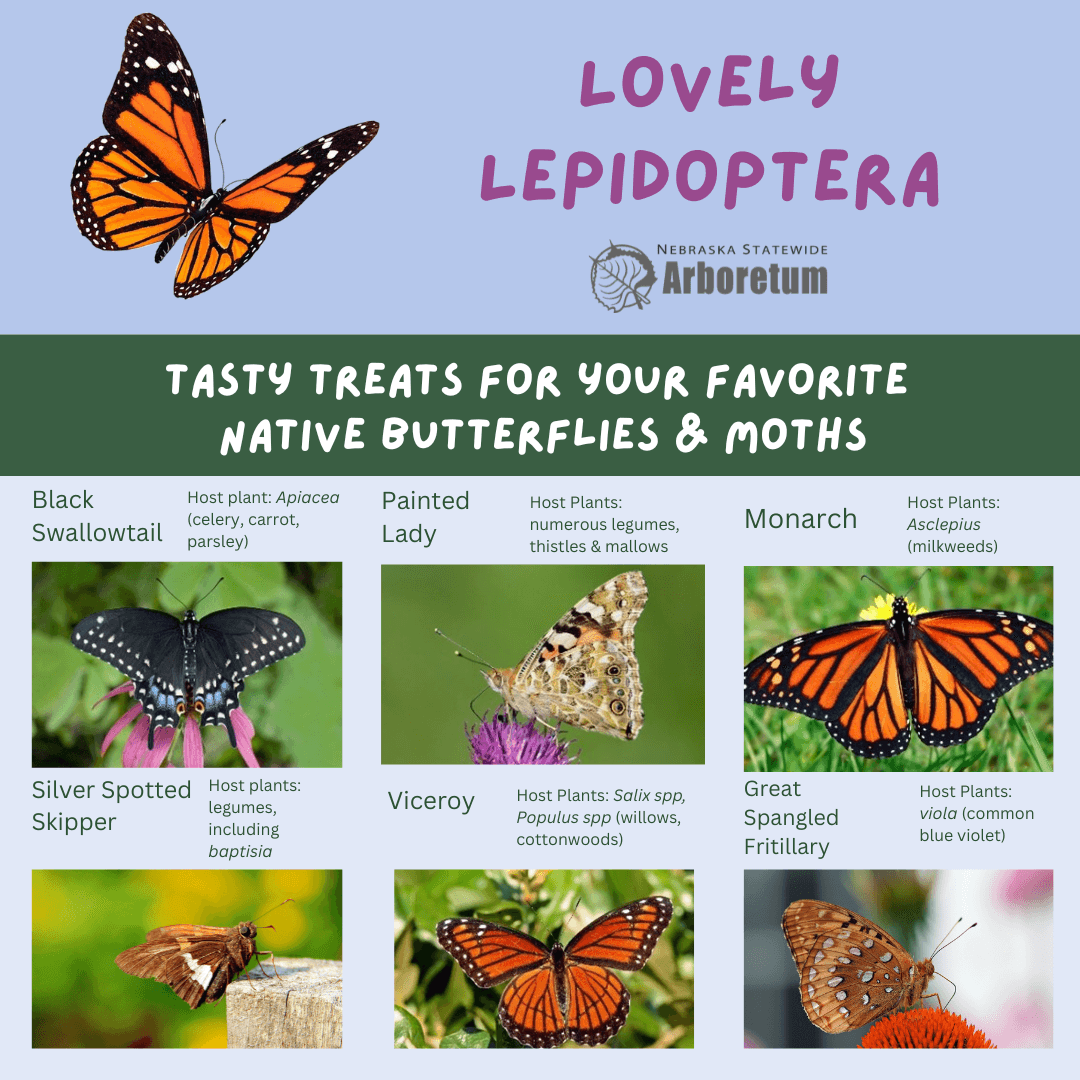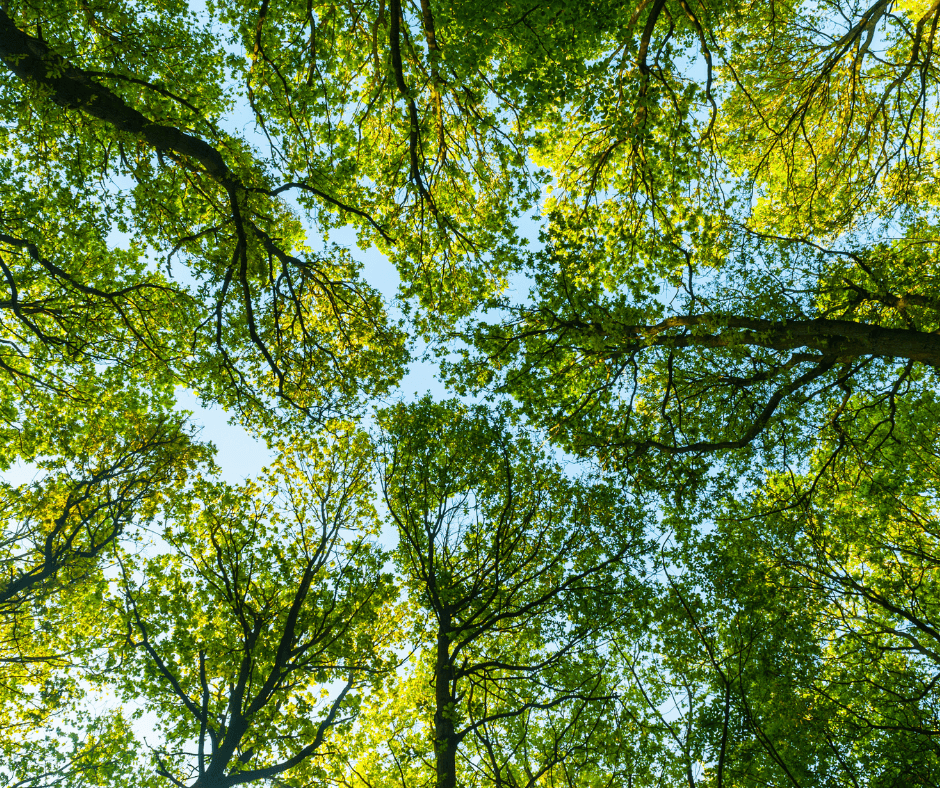
One common presumption in gardening is that we should do everything we can to support native pollinators simply because they pollinate our flowers. While this is certainly true, it’s also important to remember that native pollinators, specifically Lepidoptera (butterflies and moths), provide additional benefits to the ecosystem even beyond pollination. Caterpillars, for example, are crucial prey for many birds, mammals and predatory insects in Nebraska, providing vital energy into higher trophic levels by being primary consumers of plant materials. This predation stabilizes pollinator populations as well as predator populations via competition.
With nearly 12,000 species in North America, the diversity and abundance of Lepidoptera species provides an important base for the food web. However, like other North American fauna, many Lepidoptera species are facing population decline as the result of anthropogenic factors. Deforestation impacts crucial breeding and overwintering habitat, for example, while pesticide and herbicide runoff affect key feeding sites.
The good news is that we can help to offset these negative trends by planting a diversity of native plants that contribute to a robust ecosystem for Lepidoptera. Oak (Quercus) trees, for example, provide host support to approximately 400 different Lepidoptera, while maples (Acer) serve as hosts for 285 species and Pines (Pinus) to as many as 203 species.
Native plants are particularly important because the relationships between host plants and pollinators have often evolved over millennia to become mutually beneficial. In fact, many species of Lepidoptera are “loyal” to a single host plant species and can only digest material from that particular species. A species of butterfly larvae that has evolved to subsist on a certain species of oak leaf, for example, won’t be able to digest a maple leaf because the chemical composition of the two leaves is different.
In order to support our favorite native Nebraska butterfly and moth species, including the painted lady, viceroy, monarch, swallowtail and silver spotted skipper, we must maintain ecosystems that provide both valuable host plants and beneficial food plants. Here are some good native plants to consider, along with the butterflies and moths that like to live on and snack on them:
Black swallowtail (Papilio Polyxenes)
Host plants: a wide variety of Apiacea (carrot, parsley, celery), as well as dill and fennel
Beneficial food plants: Asclepius (milkweed), Cirsium (thistle), Malus (crabapple), Prunus (plum) and Phlox
Monarch (Danaus plexippus)
Host plants: Asclepius (milkweed)
Beneficial food plants: Asclepius (milkweed), Eupatorium (boneset), Phlox and Vernonia
Painted Lady (Vanessa carduii)
Host plants: various legumes, thistles and mallows
Beneficial food plants: Asclepius (milkweed), Aster, Echinacea (coneflower), Eupatorium (boneset) and Liatris (gayfeather)
Silver Spotted Skipper (Epargyreus clarus)
Host plants: various legumes, including baptisia and wisteria, Robinia pseudoacacia (black locust)
Beneficial food palnts: Allium (onion), Asclepius (milkweed) Aster, Liatris (gayfeather), Echinacea (coneflower), Rudbeckia (black-eyed Susan)
Viceroy (Limenitis Archippus)
Host Plants: Salix spp. (willows) and Populus spp. (poplar, cottonwood)
Beneficial food plants: Asclepius (milkweed), Aster, Cirsium (thistle), Solidago (goldenrod)


